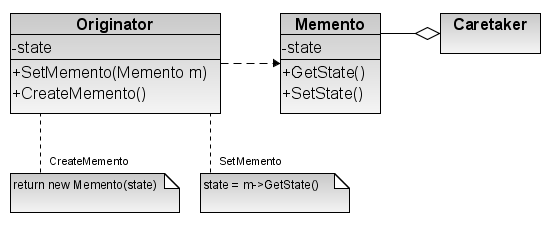Some design patterns are used all the time and their names are known to all - like facade, factories and proxies. Some design patterns are more popular than they should be. But some, although rarely mentioned by their name, have been recently "rediscovered". I'm talking about Flyweight and Memento.
Flyweight
This one basically lets us share n instances between m concurrent clients when m > n. It separates "intrinistic state", the normal class members, and "extrinistic state", which is maintained via parameter passing and return values. Make your intrinistic state immutable, and you can share the same instance between multiple clients. Cool, ha? Priceless. Look at message passing concurrency instead of shared memory concurrency, REST, transactionless architecture... All these treasures actually follow the same spirit as Flyweight.
Memento
This pattern suggests that if you want to save your object state, you better export it in a new dedicated memento object and store the memento. Then restore your object from the memento. This is like serialization, only serialization didn't follow the pattern, unfortunately.
This is like serialization, only serialization didn't follow the pattern, unfortunately.
Josh Bloch suggests we do it manually with so called "Serialization Proxies" - see item 78 in chapter 11 of 2nd edition of "Effective Java". Here's a slide from JavaOne 2006 preso:
Now imagine persistence architectures actually using intermediate memento objects... instead of modifying actual objects bytecode, breaking encapsulation with access to their private fields, imposing constraints like public empty constructors and so on... Maybe we would have been better off with mementos...?
Friday, January 9, 2009
The return of forgotten design patterns
Posted by
Yardena
at
5:35 PM
![]()
Labels: java, software engineering
Subscribe to:
Post Comments (Atom)








No comments:
Post a Comment